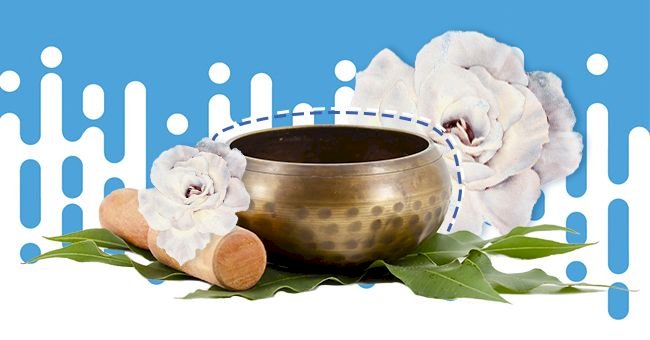
5 Incredible Benefits Of Sound Bath Meditation
Self-care and alternative healing are major trends in 2020. The trend has brought to light an ancient therapeutic ritual called sound bath meditation.
Everyone from the Kendall Jenner to Robert Downey Jr. has given the practice a try. But what exactly does sound bath meditation do for a person?
The Ancient Origins of Sound Healing

Photo by Conscious Design on Unsplash
While sound bath meditation may be a new trend, the practice has been around for years. From Tibetan singing bowls to Aboriginal didgeridoos, the therapeutic effects of music and sound has been used in healing for thousands of years.
The ancient Greeks used sound vibration to aid in digestion, mental illness, and even insomnia. While at the end of the 19th century, researchers focused on proving the correlation between sound and healing.
What Is a Sound Bath?
A sound bath is essentially a meditation class. It aims to induce a deep meditative state using ambient sound.
Meditation has been known to help manage stress and improve overall wellbeing. The sounds used during the process are intended to facilitate the process and enhance the experience.
Benefits:

Photo by Ale Romo Photography on Unsplash
1. Similar Healing Benefits To Sound Therapy
Soothing sounds and chants have been used for healing from ancient times. According to Dr. Helen Lavretsky, a professor of psychiatry and director of the Late-Life Mood, Stress and Wellness Program at the University of California, Los Angeles, the healing power of sound has been noted for years.
Research shows that chanting has physiological effects. Studies show it may improve mood and cognition, and boost anti-viral activity. However, most of this research focuses on the healing benefits of sound therapy and not specifically on sound baths.
2. Reduces Tension, Anger, Fatigue & Depression
A 2016 study showed that after doing sound meditation with a Tibetan singing bowl many people reported feeling significantly less tension, anger, fatigue, and depression.
Many also noted feelings of spiritual well-being. The results appeared more significant in those who experienced this type of meditation for the first time.
3. Lowers Blood Pressure & Heart Rate
In 2008, a study found that singing bowls can lower blood pressure and heart rate. This was linked to the sounds activating the parasympathetic nervous system (PNS).
This part of the body regulates rest. As a result of triggering the PNS muscles will relax, breathing will slow, and blood pressure and heart rate will lower.
4. Reduce Pain
“Whether you’re listening to music or playing a musical instrument, your brain and your body typically experiences changes that are beneficial,”
says Helen Lavretsky, MD, a geriatric psychiatrist and director of the UCLA Late-Life Mood, Stress and Wellness Program.
According to Lavretsky, research shows that soothing music also activates the sensory pathways linked to pain. Pain is known to cause massive stress resulting in the heart beating harder, blood pressure spiking, and muscle aches. Thus by activating the sound pathways sound can reduce pain and as a result, treat some of the symptoms associated with pain.

Photo by Kitera Dent on Unsplash
5. Soothe The Mind & Body
Finally, the combination of meditation and sound therapy can have a soothing effect on the mind and body. This in turn helps ease symptoms of conditions like chronic pain, insomnia, depression, anxiety, and post-traumatic stress disorder.
However, it is important to note that sound baths cannot replace standard treatments for these conditions. It can be used to complement these treatments.
Cost
A group sound bath session can cost between $30 to $65. While private sound baths would cost more.